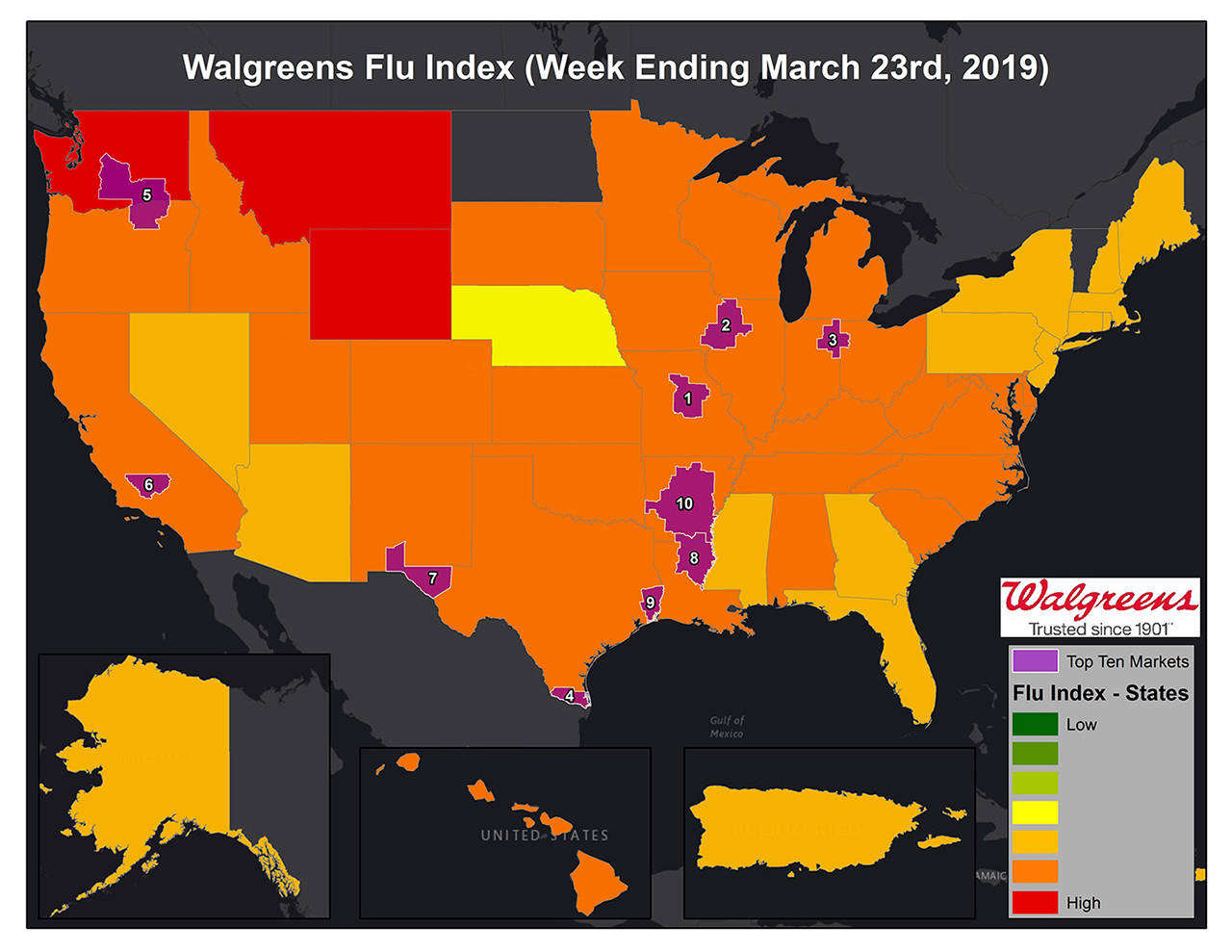EVERETT — It’s still bad, but it might be getting better.
Hospitals and clinics in Snohomish County continue to record high numbers of patients testing positive for influenza A, but the worst could be over.
“We may have seen the peak of the 2018-2019 outbreak,” said Dr. Yuan-Po Tu, who monitors influenza issues for The Everett Clinic.
The number of patients testing positive and the percent positive test rate dropped slightly a week ago. The downward trend continued through Wednesday of this week. For instance, a week ago, the Everett Clinic had more than 200 tests run per day with 54 percent coming back positive for influenza.
On Wednesday of this week, that number of tests was 174 with about 41 percent testing positive.
“The levels are still very, very high,” Tu said. “But this is better than last week.
“My educated guess is that we are probably at the peak or just rolling over the top of the peak right now,” he said.
This has been an unusual flu season. Early on, the predominant virus was Influenza A H1N1. These days it’s Influenza A H3N2, which can be more life-threatening for seniors and people with chronic health conditions.
March has been remarkable for Tu and others tracking the trend lines.
“We have never seen this intensity of flu activity in my entire career here,” Tu said. “The only saving grace is the severity of what we have seen so far has been less severe than what we saw last year and the year before.”
Last year, 296 influenza-related deaths were reported across the state. The year before, there were 278. This year, through March 16, there were 114, according to the state Department of Health.
As of the most recent reporting period ending March 23, there have been 17 deaths in Snohomish County. During that time, 31 schools have reported higher than 10 percent absentee rates due to influenza-like illnesses, according to the Snohomish Health District. In addition, 286 people had been hospitalized. There also have been 10 long-term care facilities that have reported with influenza-like outbreaks.
Flu symptoms typically start suddenly and include fever, chills, cough, sore throat, runny or stuffy nose, body aches, headache, fatigue and, in some cases, vomiting and diarrhea. People should be fever-free for at least 24 hours before returning to school or work.
Not everyone with the flu will have a fever.
Although the aches and fever caused by the flu can make someone miserable, it generally can be treated at home by drinking fluids and taking over-the-counter medications, such as acetaminophen or ibuprofen.
Those over 65 and people with chronic conditions such as asthma should continue to be vigilant and consult a doctor if they develop respiratory issues. The health district said caution also should be taken with children and pregnant women.
People with flu symptoms who are seen in a medical clinic within two days of the onset of symptoms may be prescribed Tamiflu, which can shorten the duration of the virus.
Eric Stevick: 425-339-3446; stevick@heraldnet.com.
Talk to us
> Give us your news tips.
> Send us a letter to the editor.
> More Herald contact information.

























